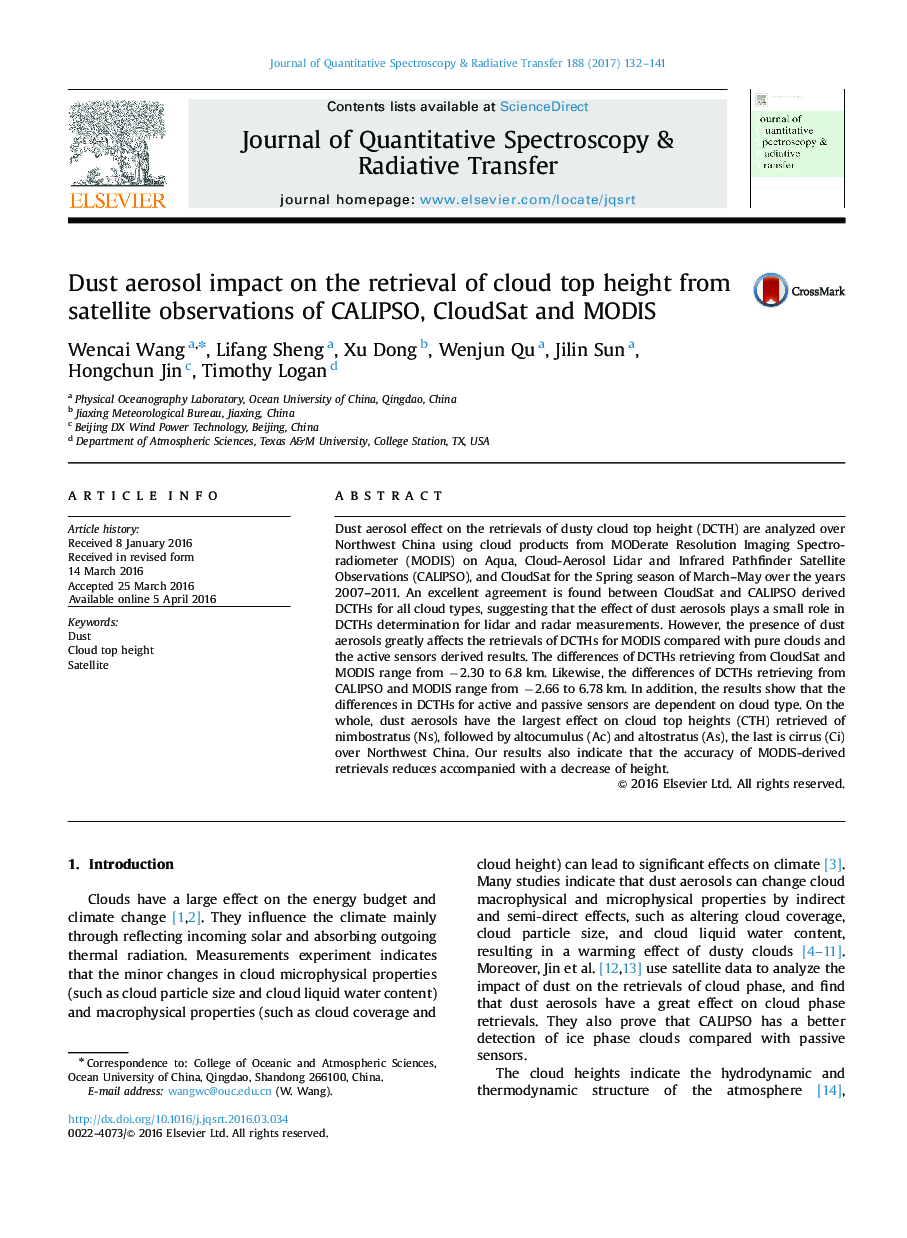| Article ID | Journal | Published Year | Pages | File Type |
|---|---|---|---|---|
| 5427287 | Journal of Quantitative Spectroscopy and Radiative Transfer | 2017 | 10 Pages |
â¢Dust aerosols have effects on the determination of dusty cloud top height.â¢Dusty cloud top height retrievals by active and passive sensors are dependent on cloud type.â¢MODIS retrieval dusty cloud top heights disagree significantly with CALIPSO and CloudSat.â¢The accuracy of MODIS-derived retrievals reduces accompanied with a decrease of height.
Dust aerosol effect on the retrievals of dusty cloud top height (DCTH) are analyzed over Northwest China using cloud products from MODerate Resolution Imaging Spectroradiometer (MODIS) on Aqua, Cloud-Aerosol Lidar and Infrared Pathfinder Satellite Observations (CALIPSO), and CloudSat for the Spring season of March-May over the years 2007-2011. An excellent agreement is found between CloudSat and CALIPSO derived DCTHs for all cloud types, suggesting that the effect of dust aerosols plays a small role in DCTHs determination for lidar and radar measurements. However, the presence of dust aerosols greatly affects the retrievals of DCTHs for MODIS compared with pure clouds and the active sensors derived results. The differences of DCTHs retrieving from CloudSat and MODIS range from â2.30 to 6.8Â km. Likewise, the differences of DCTHs retrieving from CALIPSO and MODIS range from â2.66 to 6.78Â km. In addition, the results show that the differences in DCTHs for active and passive sensors are dependent on cloud type. On the whole, dust aerosols have the largest effect on cloud top heights (CTH) retrieved of nimbostratus (Ns), followed by altocumulus (Ac) and altostratus (As), the last is cirrus (Ci) over Northwest China. Our results also indicate that the accuracy of MODIS-derived retrievals reduces accompanied with a decrease of height.
